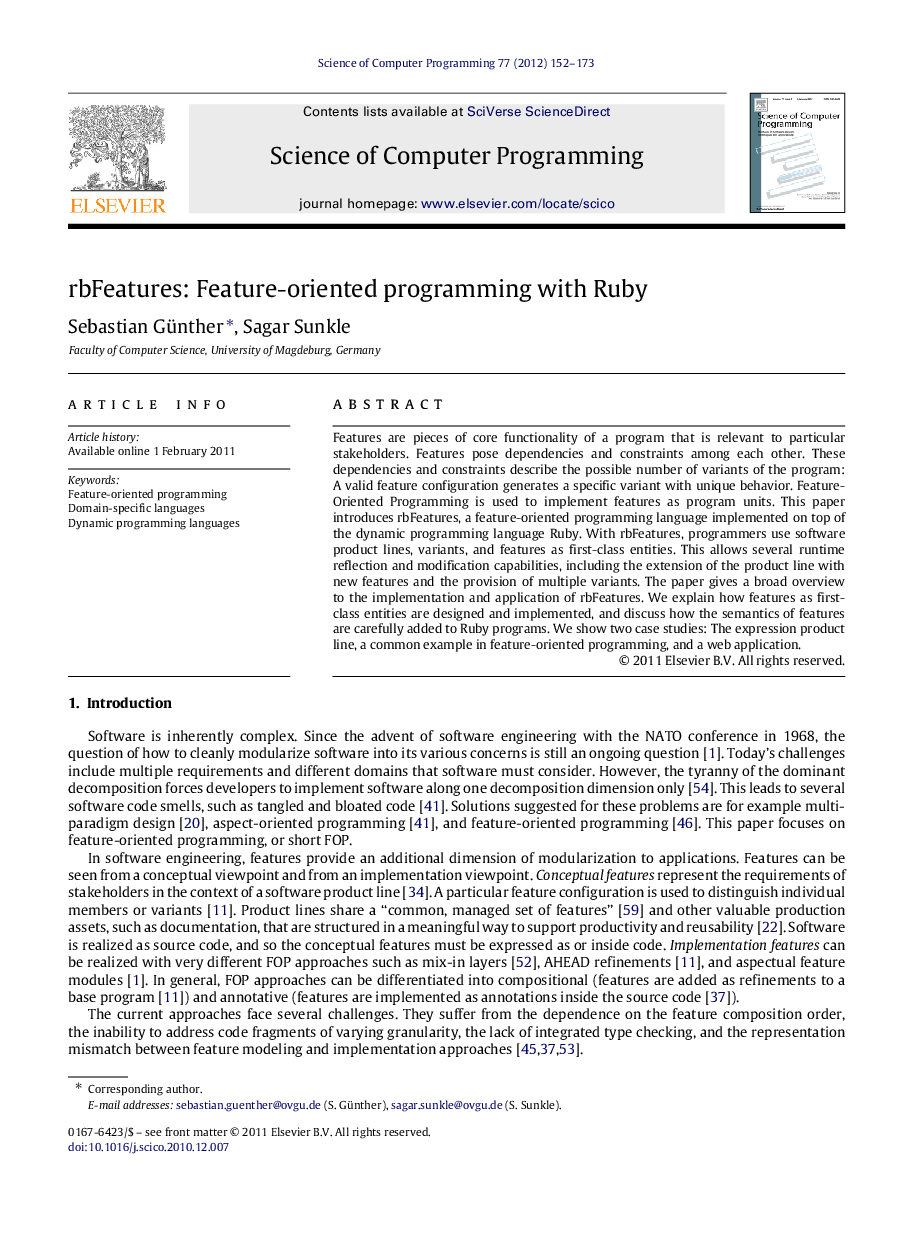| Article ID | Journal | Published Year | Pages | File Type |
|---|---|---|---|---|
| 433453 | Science of Computer Programming | 2012 | 22 Pages |
Features are pieces of core functionality of a program that is relevant to particular stakeholders. Features pose dependencies and constraints among each other. These dependencies and constraints describe the possible number of variants of the program: A valid feature configuration generates a specific variant with unique behavior. Feature-Oriented Programming is used to implement features as program units. This paper introduces rbFeatures, a feature-oriented programming language implemented on top of the dynamic programming language Ruby. With rbFeatures, programmers use software product lines, variants, and features as first-class entities. This allows several runtime reflection and modification capabilities, including the extension of the product line with new features and the provision of multiple variants. The paper gives a broad overview to the implementation and application of rbFeatures. We explain how features as first-class entities are designed and implemented, and discuss how the semantics of features are carefully added to Ruby programs. We show two case studies: The expression product line, a common example in feature-oriented programming, and a web application.
Research highlights► rbFeatures implements features and product lines as first-class entities. ► Feature-refactoring of existing programs requires only small code modifications. ► Arbitrary product variants can be created and modified at runtime. ► rbFeatures is a pure language extension that works with several Ruby interpreters.
